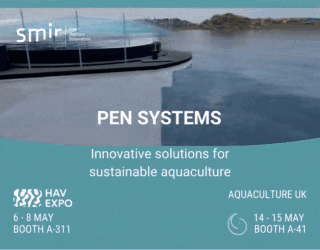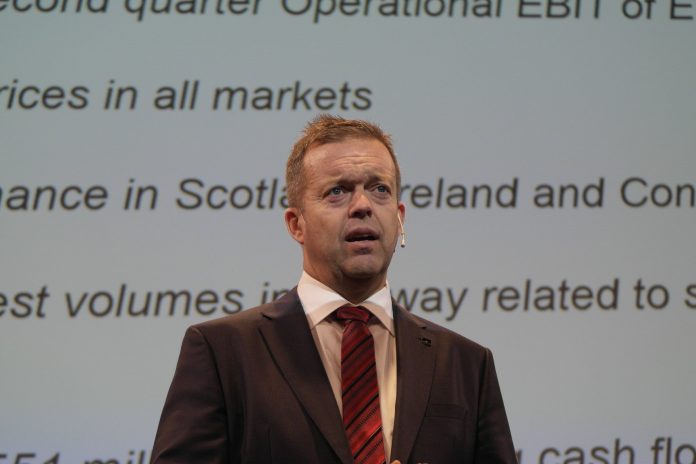“One must be able to separate the host (salmon) and the lice,” says Alf-Helge Aarskog.
He has just presented the excellent figures for the second quarter of the year. And earnings have not been driven by volume growth, but 100 percent by high selling prices.
“Good food has a high cost. That’s something we must get used to,” the Marine Harvest boss says.
“It’s a joyous day for the shareholders. We’re paying 3.20 kroner (€0.35 Editor’s note) in dividends per share. And that’s not the annual, but the quarterly dividend,” Aarskog adds.
Bottleneck
Volume growth is being limited by one factor: salmon lice.
“In the big portfolio here, the Norwegian coast, we face challenges from lice. Optilicer, hydrolicer, thermolic and clean fish. Everything one can use these, and we have them. But that is not enough. If we’re to grow five-fold in Norway, one must have a closed system or vaccines or the like that can separate host and lice. Mortality is too high with the treatments we are using.”
 Lack of growth in production results in high prices while reducing feed costs.
Lack of growth in production results in high prices while reducing feed costs.
“All feed ingredients are falling in price, and we expect that we will see the effect of it in the coming quarters.”
Better operation
Aarskog particularly emphasizes Scotland, which has delivered a “fantastic quarter”.
“We are slaughtering high volumes for better operation.”
He is also pleased with developments in Chile.
“There are positive figures in Chile also, against negative ones last year, at about the same volume.”
Second best
Finance Director Ivan Vindheim is also pleased with the quarter’s figures.
“We had our second best second quarter ever this time,” he says, adding that operating profit ended at €198 million.
The hefty cash flow strengthens the balance, even though the company distributes dividends to shareholders every quarter.
“Our net interest-bearing debt is down to €550 million in this quarter. The equity ratio is 58.1 percent,” Vindheim says.












